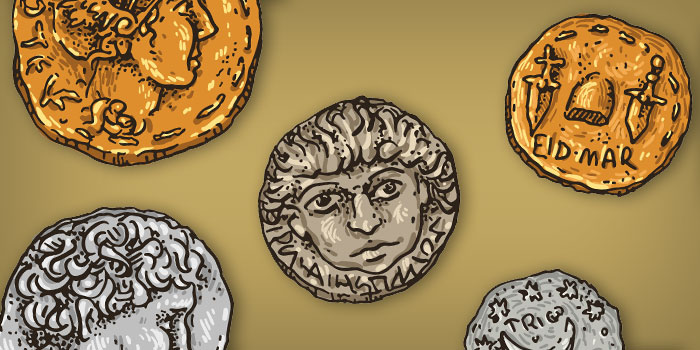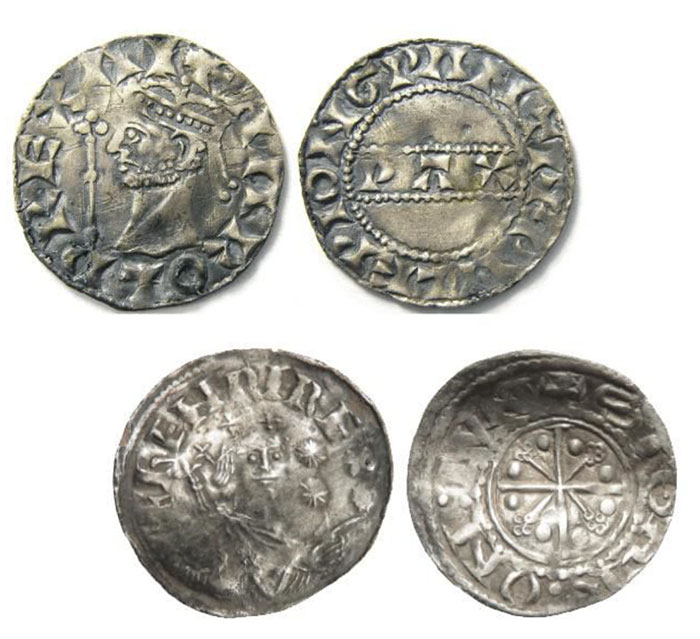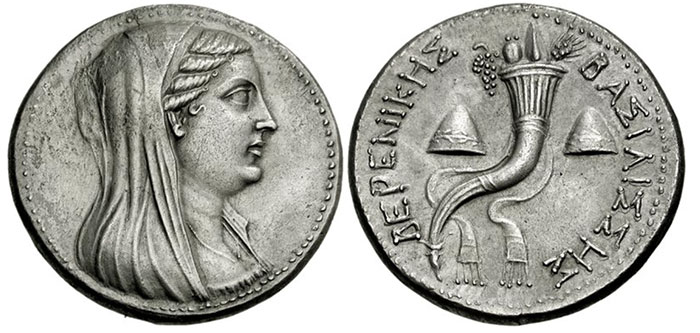
By Tyler Rossi for CoinWeek …..
One of the most common questions I receive as a numismatist and a numismatic writer is: How much did you pay for this ancient coin? Usually followed by: How much will you sell it for?
What most people want to know is will I lose money or make money by buying and selling my ancient coins.
A collector of modern coins can, with enough education, be relatively assured that they will at least come out even with their purchases. But unlike modern numismatic and bullion coins, whose prices are relatively easy to track and have a significant market, the ancient coin market is a little more complicated.
There are four main reasons for this:
- Almost constant discoveries can flood the market with thousands of coins without warning.
- Restrictive laws can reduce supply and increase demand.
- There seems to be an influx of super-wealthy collectors.
- The rise of internet stores and online auctions has impacted the ancient coin market dramatically.
Discoveries
One of the best ways I have of describing the rarity of ancient coins to numismatists who specialize in modern types is by comparing them to shipwreck coins. They are rare until suddenly they are not.
There are several reasons for this. Many coins are unearthed daily by metal detectorists and other individuals who are both searching for coins and simply stumble upon them.
This slow and steady rate of discovery unearths both common varieties and potentially unique types. For example, in August 2020, two British teenagers separately unearthed a pair of rare silver pennies of Harold II and Henry I from 1066 and 1106 respectively. The second is an extremely rare type with Henry pointing to a comet in the obverse field.
Less common but with an outsized impact on the ancient coin market are the discoveries of large hoards.

While many discoveries are small, with most under 100 coins, some are absolutely massive. The Mir Zakah II hoard, for example, is the largest ever discovered. Unearthed in 1992 somewhere near the village of Mir Zakah, 53 km north-east of the city of Gardez in eastern Afghanistan, contained approximately 550,000 gold, silver, and bronze coins from the Hellenistic world as well as Graeco-Bactrian, Indo-Greek, Indo-Scythian, Indo-Parthian, and Kushan kingdoms.
Not only were there unique individual types, such as a series of “tetradrachma of Attic weight standard struck for King Menander I with unknown type and legend arrangement” and a famous Alexander the Great gold medallion that is believed to be in a private UK collection, but there was also a massive quantity of previously rare coins. For example, from this very hoard, there is still a cache of approximately “three tons of valuable coins in Basel, Switzerland” that “remains tantalizingly inaccessible to [the] scholar” but may hit the market at any time. In fact, it is estimated by some amateur numismatists on coincommunity.com that the discovery and later illegal sales of the coins found at Mir Zakah depressed the market up to 90%, with some types selling for “as little as 10% of their former value.”
While an extreme example, some form of price fluctuation after a hoard like that hits the market is common.

Another hoard that impacted the market, albeit in a much more limited manner, was comprised of a small number of the famous pentekaidekadrachm of Berenice II minted under Ptolemy III Euergetes. There was only one known example valued at above $100,000 USD before this hoard was discovered. Immediately afterward, the price plummeted, with two examples in 2005 both selling for $14,000. The market seems to have absorbed the limited number of additional coins as prices continue to rise. The most recent example, of fine style and in phenomenal condition, sold for $84,000 with other less-preserved examples fetching lower yet still respectable prices.

A very good tool to research hoard discoveries can be found on an American Numismatic Society (ANS) website. Titled Coin Hoards, this website is a fascinating research tool that includes the “primary data and other information” from 2,387 hoards of Greek and non-Roman coins produced between 650 and 30 BCE. This resource can help an aspiring numismatist by providing a useful analysis of past discoveries and potential future developments. It is important to note, however, that past discoveries are not the end-all, be-all, and can only provide an indication of what else is yet to be discovered.
Restrictions
The second main trend in ancient numismatics is the ever-increasing restrictions on purchasing coins. I am not debating the morality or necessity of these international agreements – much ink has already been spilled on this topic, including by several CoinWeek authors. Here is a recent article from July 2020 discussing the Italy-US Memorandum of Understanding. Nevertheless, the fact remains that these restrictions are slowly restricting the overall supply of many types. As a result, these treaties have contributed to a general increase in prices.
Super-Wealthy Collectors
The third trend that has recently impacted the ancient market is the recent influx of hyper-wealthy individuals.
While there have always been wealthy numismatists who are able to purchase highly valuable coins, recent auction results seem to point towards a recent increase. One of the notable areas affected is Seleucid and Hellenistic tetradrachms. For example, from 2014 to 2019 a high-quality, but not a rare variety, tetradrachm of Antiochus III the Great cost $500 to $750 on average. In 2021, however, similar coins in comparable conditions can cost between $1,000 and $3,000. This may be due to bidding wars, but there seems to have been a spike in prices starting sometime in late 2019, early 2020 before the start of the Pandemic.

This trend is not exclusive to Seleucid tetradrachms, and many numismatists have been outbid with the coins hammering for highly overvalued prices at many auction houses.
Internet Sales
Lastly, the rise of small-scale online coin stores and auctions have impacted the ancient coin market in two opposing ways. Firstly, the large number of small internet coin stores on certain platforms, as well as the development of the Numis-bids auction portal and other similar websites have dramatically increased the availability of ancient coins to the average collector. Many numismatists would probably not be collecting ancient coins if not for the advent of reliable internet sales. This increase in demand alone would have driven up the price of coins.
Yet they are not only a vehicle for interest. These sites also widened the pool of coins available for purchase.
So, should a numismatist look at ancient coins as an investment? The answer is: probably not. While the likelihood of the value increasing, it may take a very long time. Also, if the coin does not have inherent historical importance (like the Shekel of Tyre or lifetime issues of Alexander the Great) that will maintain its value, the discovery of a large hoard may force the price of a coin down dramatically. While the frequency of hoard discovery has decreased recently, we do not know how many there are still undiscovered. This is rather uncommon, and unless you overpay for a specific coin, the likelihood is that its value will remain the same or increase.
If you stay away from very expensive ancient coins, you are more than likely to maintain the value of your collection. While you may not make much, you will also probably not lose much. Instead, an aspiring numismatist would do well to collect what interests them and to appreciate the historical value instead of the potential financial benefits.
* * *
About the Author
Tyler Rossi is currently a graduate student at Brandeis University’s Heller School of Social Policy and Management and studies Sustainable International Development and Conflict Resolution. Before graduating from American University in Washington D.C., he worked for Save the Children creating and running international development projects. Recently, Tyler returned to the US from living abroad in the Republic of North Macedonia, where he served as a Peace Corps volunteer for three years. Tyler is an avid numismatist and for over a decade has cultivated a deep interest in pre-modern and ancient coinage from around the world. He is a member of the American Numismatic Association (ANA).





This is a really great article, and expounds upon an side to ancient coin collecting that needed to be addressed.
To expand upon a couple of areas: While having more of the super-wealthy become interested in the collecting of ancient coins can be good for the hobby (by drawing attention to it within a different group of people), it can also be a negative for the hobby. The incessant driving up of prices will, and likely already has, driven a certain group of collectors with “normal pocket depths” away from this area of collecting, out of sheer discouragement, though they may in fact love ancient coins.
Secondly, the additional bidder platforms coming online, and which generally make more coins available to the average “Joe Collector”, can be good for the hobby. But I have noticed that it also takes away from the hobby, because now we have a plethora of non-serious bidders whose only purpose seems to be in playing games with their bids. By this I mean they are not necessarily bidding to win an item, but to see just how far upwards they can drive the current auction price, without themselves becoming the high bidder.
Hey Tyler, I really appreciate your insight, and look forward to future articles from you!
Really enjoyed this article. From my point of view another recent problem has been the increase in gold value if you collect gold coins. I have lost out on many online auctions where people are prepared to treat collectible gold coins as a bullion play and I can’t compete. My worry is that they can be a loss to the coin world where historic coins are melted for bullion (sometimes assisted by national tax laws where bullion is not taxed and the owner gets a sales/VAT/GST rebate by transmuting the asset from a tax class to a non-tax class). I was hoping to delight my grandchildren with a couple of “pirate” gold and silver coins (and tall stories to go with them) but even rough examples are now out of my reach.
I have been expanding a core of Ptolemaic tetradrachms bought by my grandfather in Egypt and Palestine in 1917.
One advantage o ancients is that, if properly documented and photographed, ownership is relatively easy to Prove if ever stolen, unlike, modern machine made coins which gerally look the same.